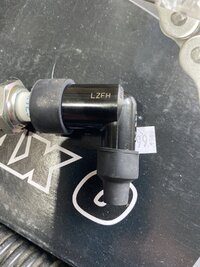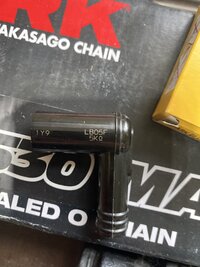My bike is a 1980 US import at heart. It runs electronic TCI ignition which I understands need a resistor plug or plug cap (not both).
I checked the INSTALLED plugs which are NGK BP7ES (Non-Resistor type)
I therefor assume the Plug Caps are resistor type which are NGK, but carry no markings. How can I check they are / are not resistor plugs?
I need to know as the Moto Gadget kit need a resistor ignition.
I checked the INSTALLED plugs which are NGK BP7ES (Non-Resistor type)
I therefor assume the Plug Caps are resistor type which are NGK, but carry no markings. How can I check they are / are not resistor plugs?
I need to know as the Moto Gadget kit need a resistor ignition.


